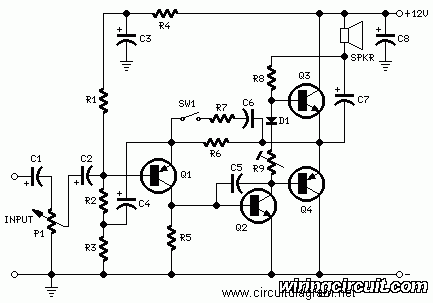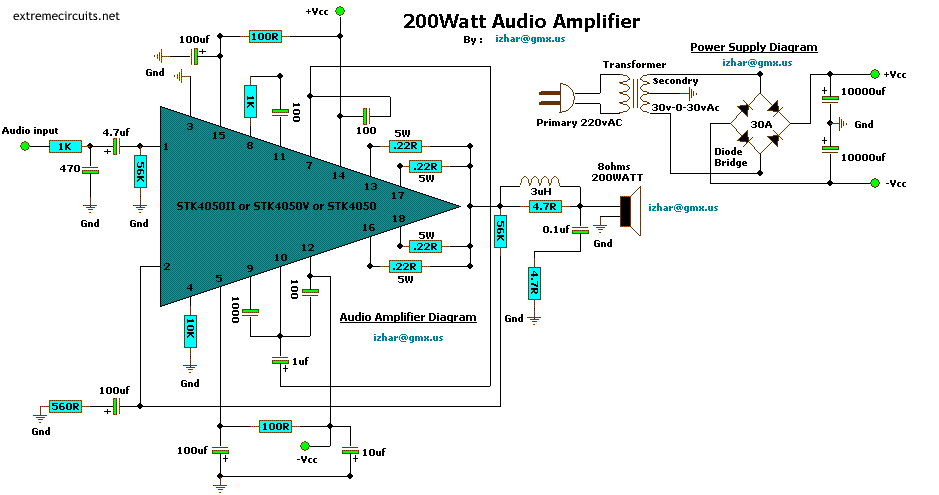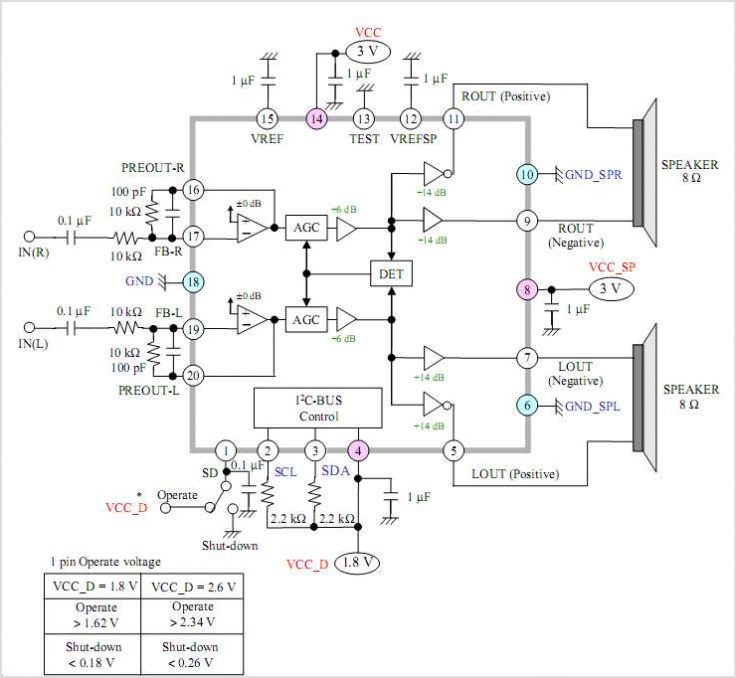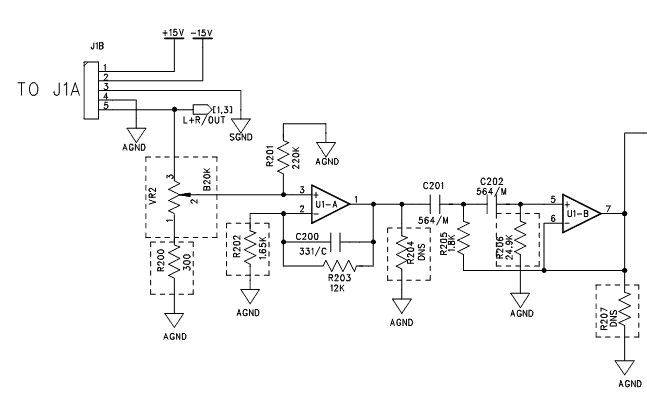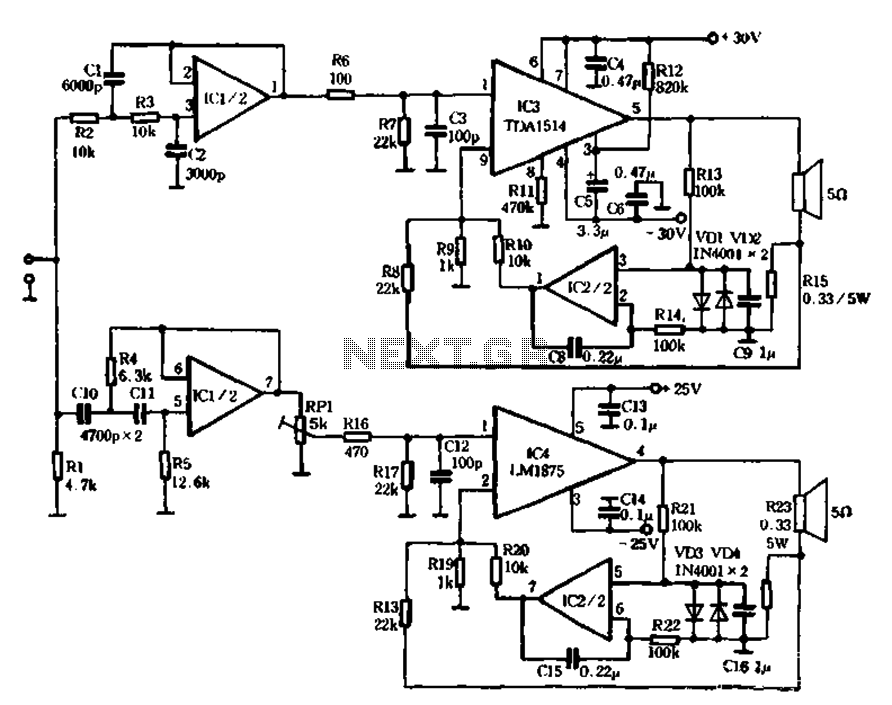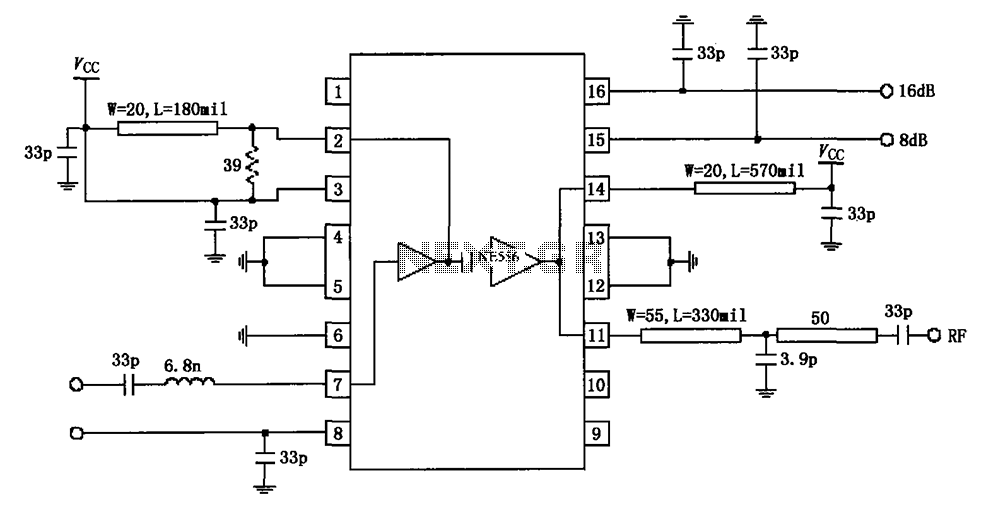
Quad op amp generates 4 waveforms
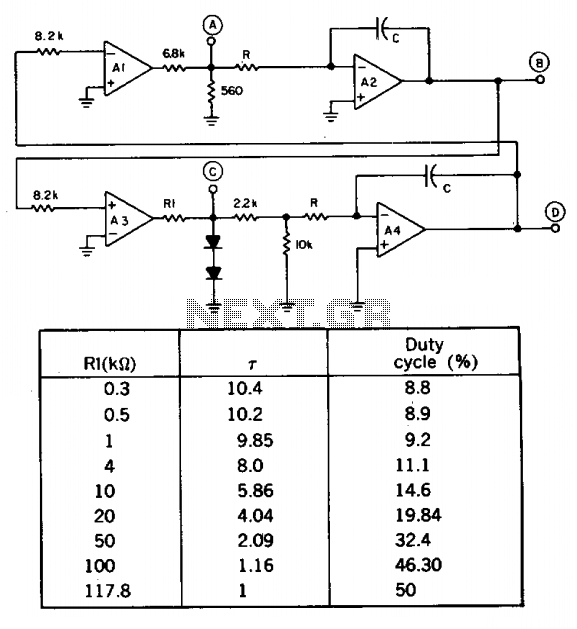
A quad op amp can simultaneously generate four synchronized waveforms. The two comparators (A1 and A3) produce square and pulse waves, while the two integrators (A2 and A4) generate triangular and sawtooth waves. Resistor R1 sets the duty cycle and the frequency, along with resistors R and capacitors C.
The described circuit utilizes a quad operational amplifier (op amp) to produce a versatile waveform generator capable of delivering four distinct output signals. The two comparators, designated as A1 and A3, are configured to generate square and pulse waveforms, which are essential for applications requiring precise timing and signal switching. The output from these comparators can be adjusted by varying the input voltage levels, thereby changing the duty cycle and frequency of the generated signals.
The integrators, labeled A2 and A4, are responsible for generating triangular and sawtooth waveforms. These waveforms are commonly used in applications such as audio synthesis, modulation, and signal processing. The triangular waveform is characterized by its linear rise and fall, while the sawtooth waveform features a linear rise followed by a rapid drop, making both ideal for creating various signal shapes.
Resistor R1 plays a crucial role in determining the duty cycle and frequency of the output waveforms. By adjusting the resistance value of R1, the timing characteristics of the comparators can be modified, allowing for a wide range of frequency outputs. Additionally, the circuit employs other resistors (R) and capacitors (C) to further refine the waveform characteristics. The selection of these passive components directly influences the circuit's performance, including rise and fall times, amplitude stability, and overall signal integrity.
The design of this quad op amp circuit is particularly advantageous in applications where multiple synchronized waveforms are required. By utilizing a single integrated component, the circuit minimizes board space and simplifies design complexity, while still achieving high-performance signal generation. Proper implementation of feedback loops and component values is essential to ensure the desired waveform shapes and synchronization are achieved, making this circuit a powerful tool in electronic design.A quad op amp can simultaneously generate four synchronized waveforms. The two comparators (Al and A3) produce square and pulse waves, while the tWo integrators (A2 and A4) give triangular and sawtooth waves. Resistor Rl sets the duty cycle and the frequency, along with resistors R and capacitors C.
The described circuit utilizes a quad operational amplifier (op amp) to produce a versatile waveform generator capable of delivering four distinct output signals. The two comparators, designated as A1 and A3, are configured to generate square and pulse waveforms, which are essential for applications requiring precise timing and signal switching. The output from these comparators can be adjusted by varying the input voltage levels, thereby changing the duty cycle and frequency of the generated signals.
The integrators, labeled A2 and A4, are responsible for generating triangular and sawtooth waveforms. These waveforms are commonly used in applications such as audio synthesis, modulation, and signal processing. The triangular waveform is characterized by its linear rise and fall, while the sawtooth waveform features a linear rise followed by a rapid drop, making both ideal for creating various signal shapes.
Resistor R1 plays a crucial role in determining the duty cycle and frequency of the output waveforms. By adjusting the resistance value of R1, the timing characteristics of the comparators can be modified, allowing for a wide range of frequency outputs. Additionally, the circuit employs other resistors (R) and capacitors (C) to further refine the waveform characteristics. The selection of these passive components directly influences the circuit's performance, including rise and fall times, amplitude stability, and overall signal integrity.
The design of this quad op amp circuit is particularly advantageous in applications where multiple synchronized waveforms are required. By utilizing a single integrated component, the circuit minimizes board space and simplifies design complexity, while still achieving high-performance signal generation. Proper implementation of feedback loops and component values is essential to ensure the desired waveform shapes and synchronization are achieved, making this circuit a powerful tool in electronic design.A quad op amp can simultaneously generate four synchronized waveforms. The two comparators (Al and A3) produce square and pulse waves, while the tWo integrators (A2 and A4) give triangular and sawtooth waves. Resistor Rl sets the duty cycle and the frequency, along with resistors R and capacitors C.
